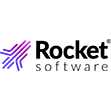
New Enterprise Economics of Storage: Cloud in Your NAS
The explosion of data collection morphed into not only “big data,” but big unstructured data. According to an IDC Digital Universe published in late 2011, some 1.8 zettabytes of data would be created just that year. The rate of growth is expected to continue to climb, increasing exponentially year after year. Enterprise Strategy Group’s 2013 survey concluded that “rapid growth and management of unstructured data” was the most commonly named primary storage challenge among respondents. This data growth is putting a strain on IT infrastructure.
What executives want is speedy access to data. This is making storage location and the costs associated with it a c-level decision. It is not news that many companies are looking to the cloud to offset IT infrastructure overhead and better manage what data is stored on more expensive on-premises systems. When usage is analyzed, one quickly sees that not all of this massive data is active — only eight percent of files. Most files are looked at once or twice and never accessed again.
Enterprises recognize the opportunity for improved economic advantages of cloud-based object storage. Lower capital equipment costs, lower operating expenses, simplified management, and reduced facility footprints for even more data attract CIOs to cloud solutions. Meanwhile, storage engineers find the massive scalability, simplified management, and built-in redundancy of cloud appealing. Yet, cloud adoption can stall with concerns of high latency, security fears, and an unfamiliar object-based access protocols.
An Onramp to the Cloud
Eliminating latency and bridging the gap between traditional network-attached storage protocols (NFS and CIFS) makes the adoption of cloud too attractive to ignore. In traditional storage architectures, Avere Edge filers optimize NAS performance, drastically increasing performance and reducing latency. With the introduction of Avere Cloud NAS, the cloud can be added to the storage plan, where it acts as a seamless part of the infrastructure and makes where your data lives irrelevant to users. Enterprises can have the freedom to connect cloud and on-premises storage without compromise.
“Avere Cloud NAS is a natural evolution of the product, advancing the adoption of cloud storage for serious business use cases,” said Terri McClure, Senior Analyst, Enterprise Strategy Group. “This latest offering provides that critical link for enterprise customers to utilize the cloud so they can reduce capital and operational expenses while benefitting from Avere’s benefit of scale out and scale up performance.”
Avere runs FlashCloud™ softwareon its FXT Edge filers. The Edge filers are placed between users and compute farms on the front-end and Core filers on the back-end, which may now include private or public cloud and legacy local and remote NAS. This integrates public and/or private object storage with legacy NAS into a global namespace (GNS), giving users everywhere scalable performance through NFS or CIFS NAS protocols. What this does is allow enterprises to choose where data should be stored, in the cloud or on-premises, either easily accessed by users. In addition, it provides the flexibility that many enterprises demand, adopting cloud storage at a pace that makes sense for the business. Avere FlashCloud translates NFS and CIFS protocols to object-based protocols, making cloud a viable option for performance-demanding applications, file shares or backup.
Overcoming latency introduced by the cloud easily becomes possible. Avere FlashCloud dynamically moves active data to the FXT Edge filer near the users and application servers. Data can be stored in the cloud while simultaneously maintaining low latency access across the enterprise.
Live, online data can transparently move between the infrastructure, including clouds using Avere FlashMove™ software. This happens without any downtime to users or applications. For example, an administrator could free space on premises storage for more primary data by moving cold data to archive in cost-effective cloud storage, like AWS Glacier.
Avere FlashMirror™ software replicates data between storage locations. Administrators can replicate on-premises data to the cloud, creating a secondary copy of the data that can be used if the primary data becomes unavailable. This capability makes cloud an important part of the enterprise disaster-recovery plan, keeping data available to users despite local threats to primary infrastructure.
Security concerns cannot be ignored. Adding an Avere FXT Edge filer with FlashCloud includes the implementation of the Advanced Encryption Standard (AES) 256-bit encryption module in Cipher Block Chaining (CBC) with optional key rotation. Because keys are never stored in the cloud, data stored there renders unintelligible to unintended consumers.
The benefits that cloud adds to enterprise storage are compounded with the benefits that come from the traditional Avere Edge-Core architecture. Together, Howard Marks of DeepStorage.com, summarizes the advantages possible with Avere:
- The decoupling of performance from capacity
- High-performance access from multiple locations
- Simplified scaling and migration
- Essentially unlimited scalability
- Simplified data protection
- Cost benefits of using the public cloud
You can read the entire overview of Avere Cloud NAS by Howard Marks of DeepStorage.com in this white paper <http://hub.am/IAOINJ>.
Economics
This flexible approach to storage deployment changes the economics of storage costs. Significant reductions can be realized by enterprises in both CAPEX and OPEX. These savings, beginning with the adoption of public cloud storage like AWS S3 or Glacier, include:
CAPEX Savings
- FXT Edge filers “plug in” to existing infrastructure
- Easy to pace transition from files to objects according to business needs
- Ability to deploy quickly in remote locations to provide fast access to remote, cost-efficient storage, ultimately helping to centralize storage and improve data protection
- Dynamic tiering allows for substantially fewer disks to be used
- Cloud adoption keeps storage upgrades and expansions under control, reducing year-after-year investments into costly equipment
OPEX Savings
- Operate a large, single cluster of NAS capacity as one system regardless of the brands or capacities of Core filers
- Added WAN acceleration – up to a 50:1 offload of traffic to the central data stores
- Less disks used leads to less space, power and cooling costs
- Fewer data centers require fewer resources to operate and administrate
Overall, enterprises can see a drastic savings over time with the Avere Cloud NAS infrastructure in place, possibly reaching as much as a 70% total cost of ownership (TCO) savings. Terri McClure described it in a recent product brief as filling a “missing link” among solutions, “by tiering data to meet performance needs, not within a system, but from FXT to multiple target systems that meet performance and retention requirements.” She goes on to foresee that, “maybe now, with this type of architecture, we can finally realize the benefits behind ILM” (Information Lifecycle Management). Read the entire ESG Product Brief by Terri McClure at <http://hub.am/1c7oNoI>.
As unstructured data continues to grow, cloud naysayers will need to change their tune to stay competitive and keep users productive. Expansion into the cloud becomes easy and even more affordable with Avere Cloud NAS in the mix. The degree of freedom and flexibility to IT organizations offered with the Avere FXT nodes provide the missing link to disparate storage systems — translating files into objects without any loss of visibility while maintaining the performance and high availability required. Enterprise-class cloud storage has become a reality with Avere’s latest Cloud NAS solution.






































